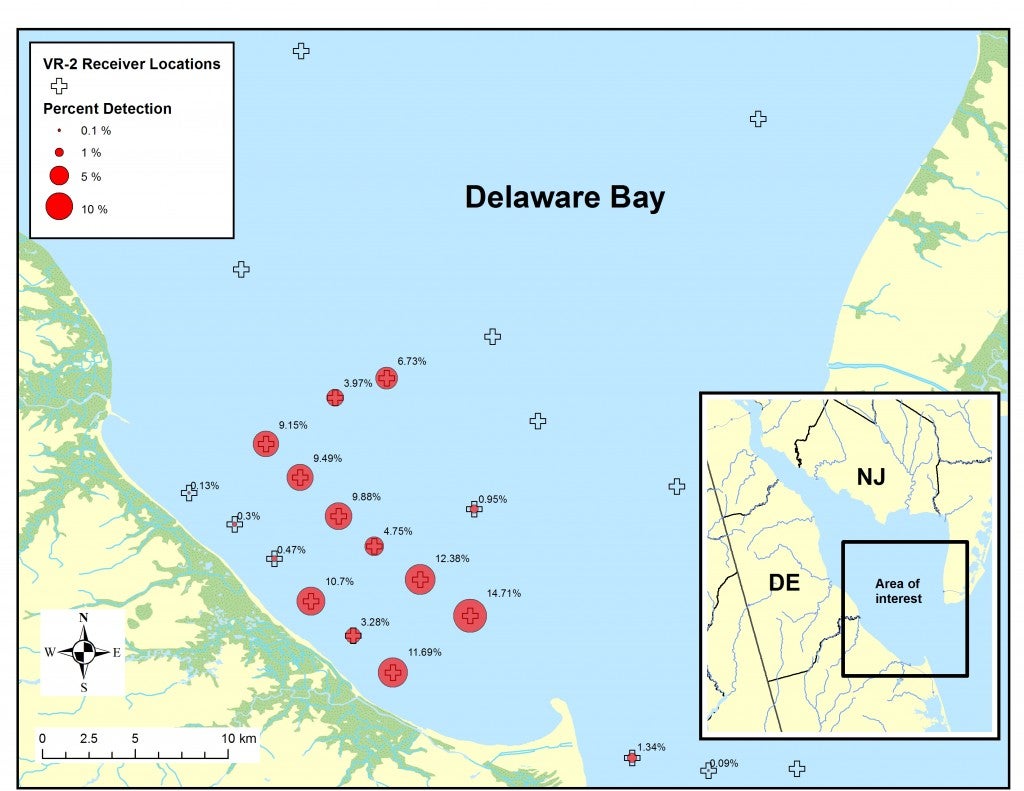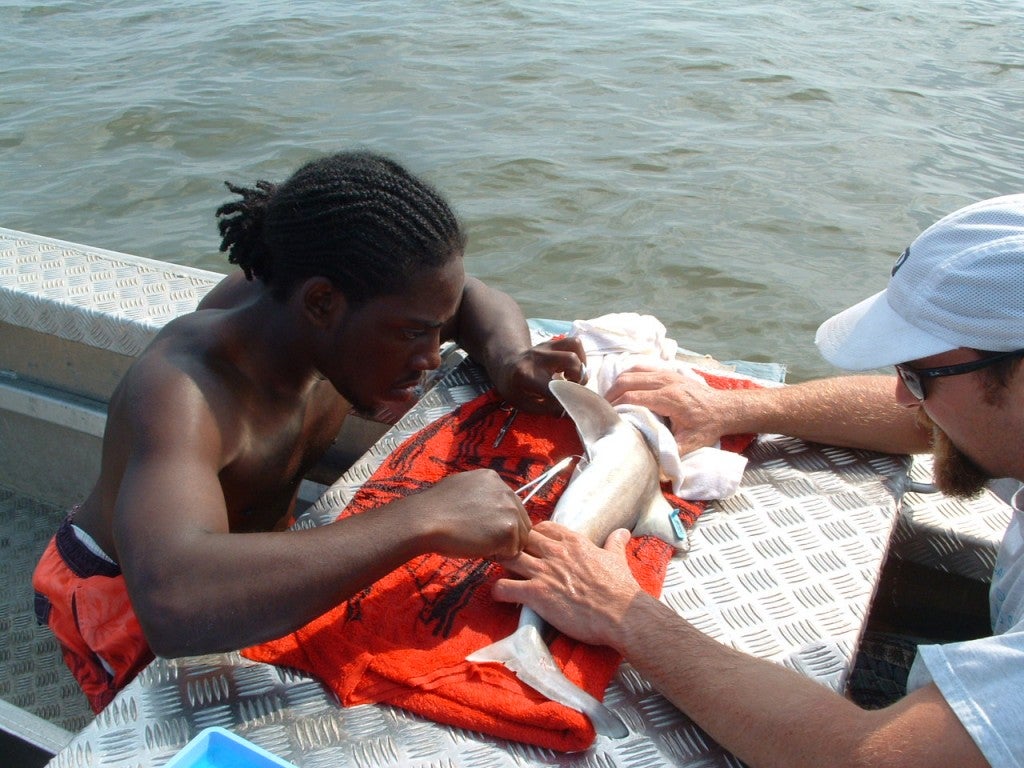Site Fidelity and Residence of Juvenile Sandbar Sharks (Carcharhinus plumbeus) in Delaware Bay
Naeem Willett & Dewayne Fox – Department of Agriculture and Natural Resources, Delaware State University
Brad Wetherbee – Department of Biological Sciences, University of Rhode Island
Sandbar sharks (Carcharhinus plumbeus) are one of the most abundant sharks on the U.S. east coast and have formed a large component of the shark fishery off the eastern seaboard, leading to a disquieting decline in the population of this species. In an attempt to recover stocks of sandbar and other heavily fished species of sharks the National Marine Fisheries Service implemented a Federal Management Plan for many Atlantic shark species. Fisheries managers continue to point out the importance of adequate nursery areas for rebuilding depleted stocks, and substantial effort has been taken to identify essential nursery habitat for Atlantic sharks. One of the most important shark nursery areas for sandbar sharks is Delaware Bay, where previous studies have identified core areas of activity that are heavily utilized by young sandbar sharks while in the nursery.
This study uses an array of automated receivers deployed within this core area for quantification of fine-scale spatial and temporal use of this habitat by sandbar sharks. The movements of sandbar sharks carrying transmitters are monitored throughout their entire summer residence within Delaware Bay . Data collected in this study will be used to quantify habitat requirements and activity patterns, and ultimately to precisely identify essential habitat on a long-term basis.


 Home
Home Browse
Browse Close
Close Events
Events Maps
Maps Email
Email Brightspace
Brightspace eCampus
eCampus


